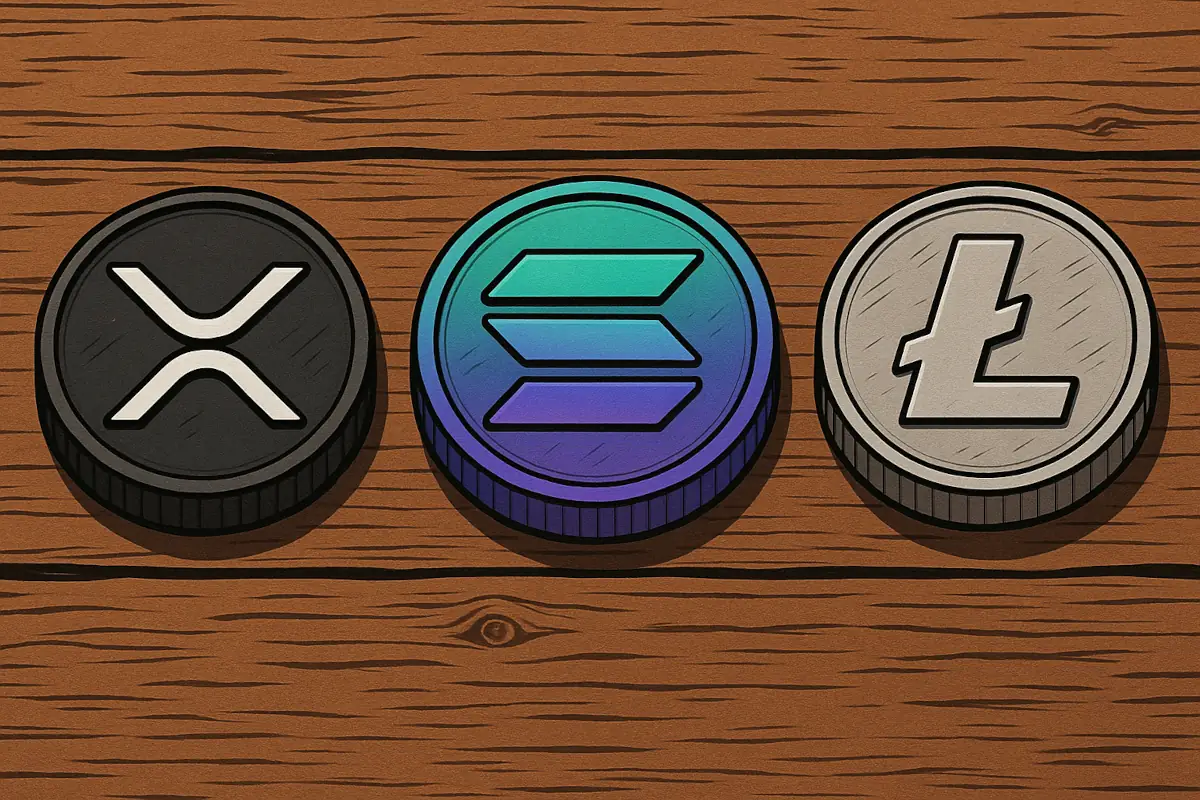After the U.S. approved spot Bitcoin ETFs last year, many expected the next wave of crypto ETFs to arrive quickly. That hasn’t exactly happened yet, but the process is moving forward. Several coins now have official filings submitted, and in many cases, the SEC has acknowledged them – which is the first major step toward approval.
While some of these filings are for leveraged or futures-based products (which are already trading in some cases), the real focus is on spot ETFs. These would allow investors to gain exposure to the actual asset – without needing to use a crypto exchange or manage wallets. Right now, XRP, Solana, Litecoin, Cardano and Dogecoin are considered the top contenders for the next round of approvals. Let’s go over what’s been filed so far, what’s already live, and what might be next.
Table of Contents
XRP: First to Launch – Kind Of
The first U.S.-listed XRP-related ETF is already trading. It’s not a spot product, though — it’s a leveraged fund called the Teucrium 2x Long Daily XRP ETF (ticker: XXRP), which lets traders bet on short-term XRP movements with twice the exposure. That ETF launched earlier this month and has already seen some interest, though it’s not designed for long-term holders.
Spot XRP ETFs are a separate matter. There are several filings – including from Grayscale, Canary Capital, and Bitwise – and they’ve all been acknowledged by the SEC. That acknowledgment doesn’t mean approval is guaranteed, but it means the filings passed the initial checks and entered the official review process.
Based on prediction market data from Polymarket, the chances of a spot XRP ETF being approved this year are currently around 77%. That number has fluctuated in the past, but it remains one of the highest among all coins with pending ETF filings.
Solana: Gaining Momentum After Canada’s Approval
Solana is also considered a strong candidate. Like XRP, it has multiple spot ETF filings that have been acknowledged by the SEC. And just this week, Canada approved its first Solana ETF – and it included staking rewards. That adds pressure on the U.S. side, as it shows regulators elsewhere are open to the idea.
In the U.S., there are already futures-based Solana ETFs available, including a 2x leveraged version launched by Volatility Shares. These products don’t hold SOL directly, but they’ve made it clear that demand exists.
Polymarket currently puts Solana’s odds of getting a U.S. spot ETF this year at about 75%. That’s just behind XRP, and there’s a good chance both approvals could happen around the same time.
Litecoin: A Simple Case Based on Bitcoin’s Precedent
Litecoin may not generate as much media attention as the other two, but from a regulatory standpoint, it might be the easiest to approve. That’s because it works in almost the same way as Bitcoin – and since Bitcoin spot ETFs are already live, it’s harder to argue against Litecoin on technical grounds.
Litecoin ETF filings have been submitted and acknowledged, and Polymarket currently estimates a 70% chance of approval this year. While it doesn’t have the same level of institutional support as XRP or Solana, it’s seen as a fairly low-risk asset to approve – especially since its structure is already familiar to regulators.
Dogecoin: Still Waiting, But Filings Are Moving
Dogecoin is a different case. While its technology is similar to Litecoin (and therefore Bitcoin), its memecoin reputation might make the approval process harder. Still, filings have been submitted, and the SEC has acknowledged them. So far, there’s been no rejection, and the review process is underway.
There’s more uncertainty here, but Polymarket still gives Dogecoin a 51% chance of getting a spot ETF approved in 2025. That might not sound high, but it shows that traders and investors aren’t ruling it out – especially if Litecoin gets approved first.
What About Other Coins?
Most of the top 20 cryptocurrencies by market cap have been included in at least one ETF filing – either individually or as part of an index-based fund. These include Cardano, Avalanche, and others. Just yesterday, the first ETF focused on Tron (TRX) with staking was filed. However, not all filings have been acknowledged by the SEC yet.
Polymarket also tracks a few other coins. Cardano (ADA) currently has a 58% chance of getting a spot ETF in 2025, according to their odds. PEPE sits much lower, at around 4%, suggesting it’s unlikely to move forward anytime soon. Most other coins, like Avalanche (AVAX), Sui (SUI), or Polkadot (DOT), aren’t tracked at all – so it’s harder to get a read on their chances for now.
The Staking Question Is Still Open
One major detail that’s still uncertain is whether spot ETFs will include staking rewards. This is especially relevant for coins like Solana or Ethereum, where staking is a key part of the ecosystem.
Canada’s Solana ETF includes staking, but in the U.S., regulators haven’t decided yet. In fact, they recently delayed a decision on Ethereum ETFs that include staking, suggesting the SEC is still debating how to handle this feature.
If U.S. ETFs are approved without staking, they’ll still offer exposure to the coins – but they may not be as competitive with holding the asset directly, especially for long-term holders. In the future, it’s likely that staking could be added, but it may not be included in the first wave of approvals.
What Happens Next?
At this point, XRP, Solana and Litecoin are the closest to getting spot ETFs in the U.S. Dogecoin and Cardano are in the running too, but with less certainty. Most of the filings for these coins have already been acknowledged by the SEC, which is the first major hurdle. Now it’s just a matter of review and final decisions.
No exact dates have been confirmed, but the general expectation is that most of them will be approved in the second half of 2025. If that happens, more filings will likely follow – and future ETFs could even bundle multiple coins together in index-style products.
In the longer term, these approvals could make crypto investing much easier for people who don’t want to use exchanges, set up wallets, or learn about DeFi. They could also open the door to crypto options in retirement funds and traditional brokerage accounts.
Read also: Hashdex Pushes for Expanded Crypto ETF with SEC Filing




